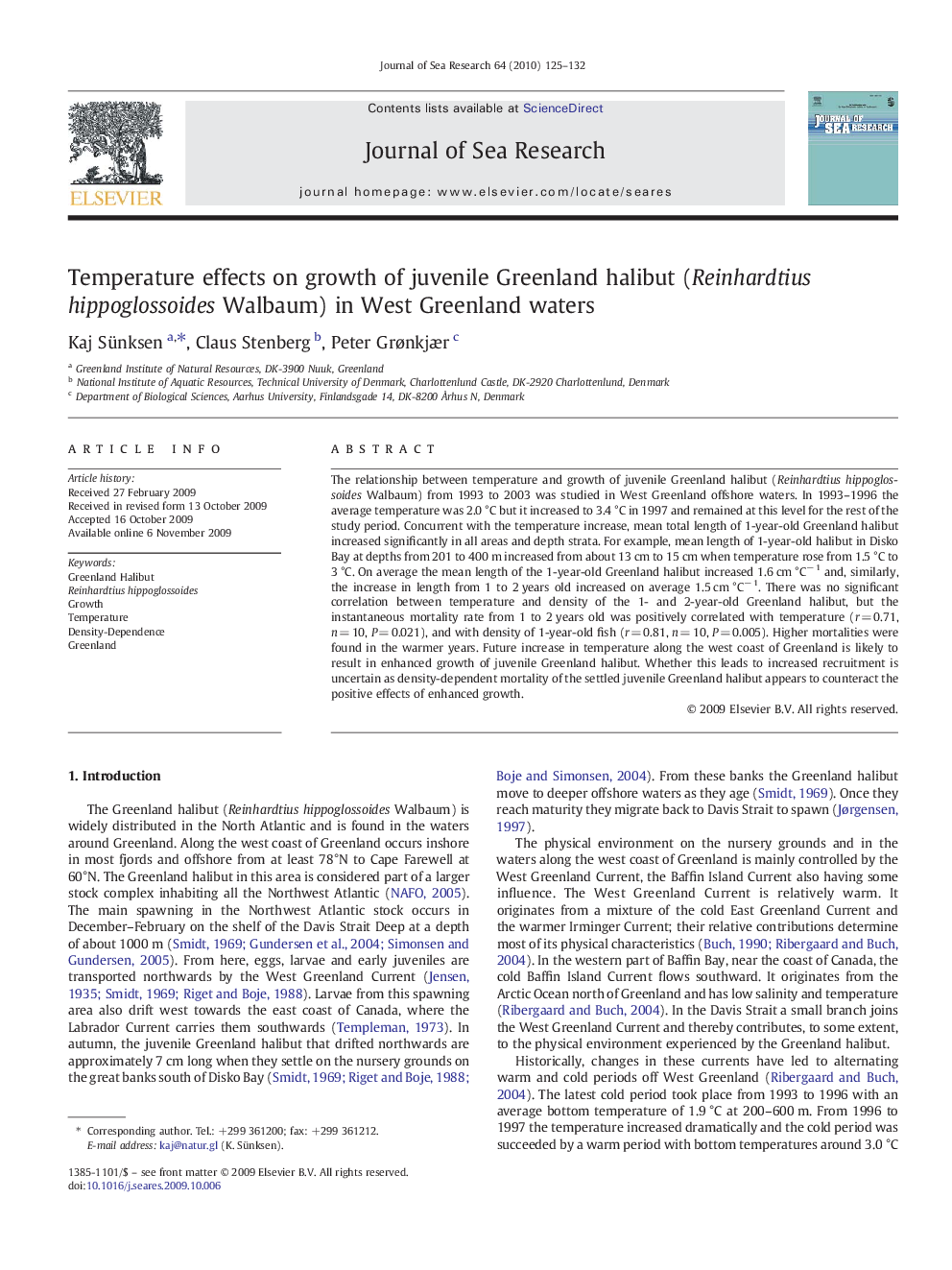| Article ID | Journal | Published Year | Pages | File Type |
|---|---|---|---|---|
| 4550138 | Journal of Sea Research | 2010 | 8 Pages |
The relationship between temperature and growth of juvenile Greenland halibut (Reinhardtius hippoglossoides Walbaum) from 1993 to 2003 was studied in West Greenland offshore waters. In 1993–1996 the average temperature was 2.0 °C but it increased to 3.4 °C in 1997 and remained at this level for the rest of the study period. Concurrent with the temperature increase, mean total length of 1-year-old Greenland halibut increased significantly in all areas and depth strata. For example, mean length of 1-year-old halibut in Disko Bay at depths from 201 to 400 m increased from about 13 cm to 15 cm when temperature rose from 1.5 °C to 3 °C. On average the mean length of the 1-year-old Greenland halibut increased 1.6 cm °C− 1 and, similarly, the increase in length from 1 to 2 years old increased on average 1.5 cm °C− 1. There was no significant correlation between temperature and density of the 1- and 2-year-old Greenland halibut, but the instantaneous mortality rate from 1 to 2 years old was positively correlated with temperature (r = 0.71, n = 10, P = 0.021), and with density of 1-year-old fish (r = 0.81, n = 10, P = 0.005). Higher mortalities were found in the warmer years. Future increase in temperature along the west coast of Greenland is likely to result in enhanced growth of juvenile Greenland halibut. Whether this leads to increased recruitment is uncertain as density-dependent mortality of the settled juvenile Greenland halibut appears to counteract the positive effects of enhanced growth.
